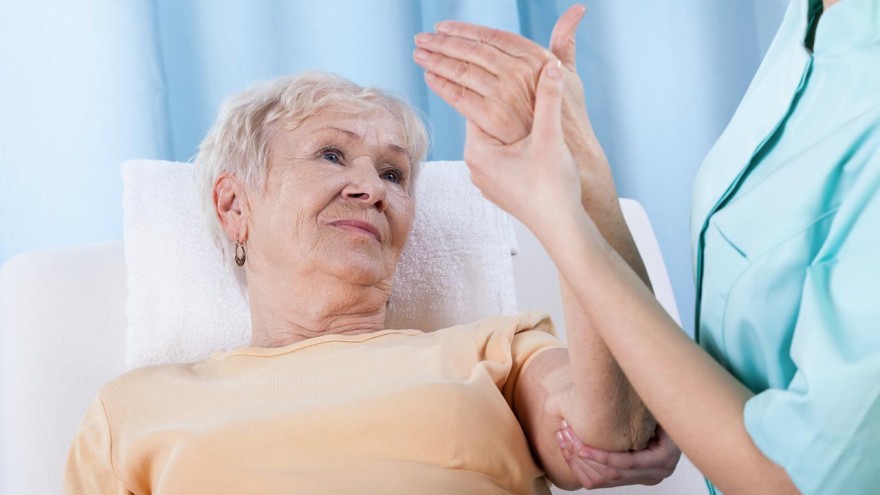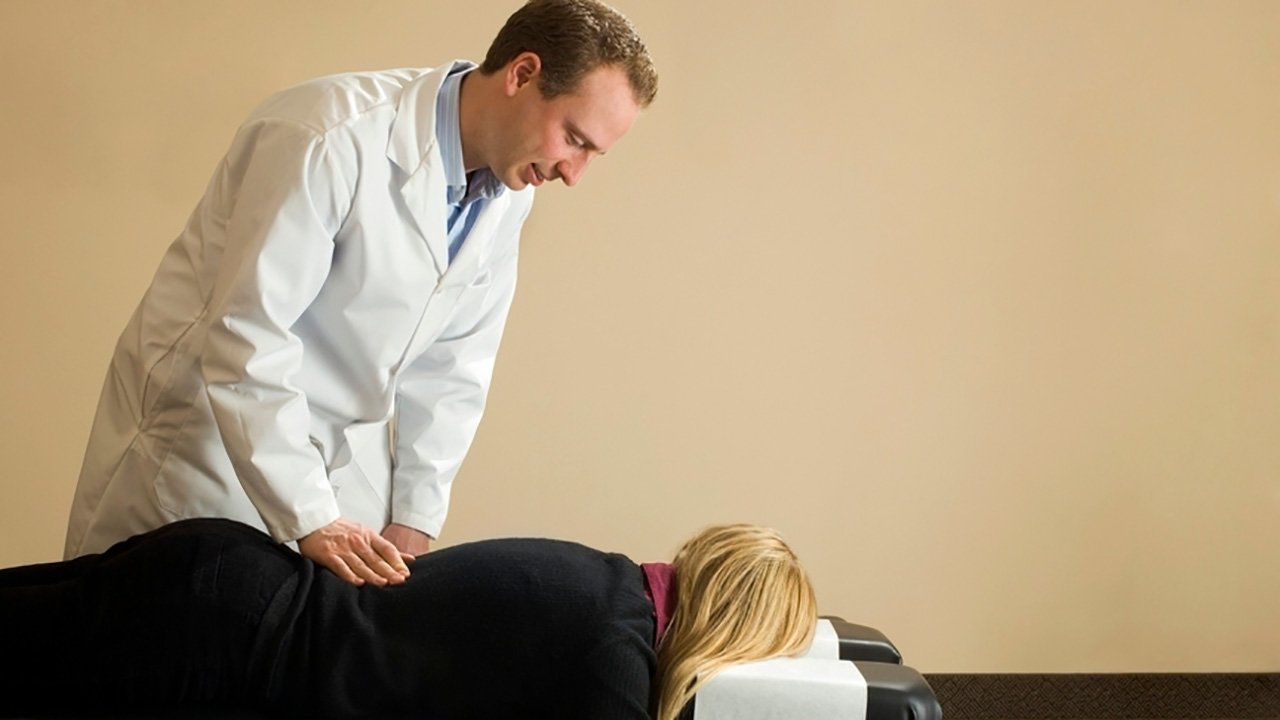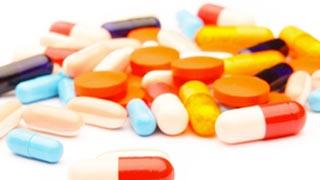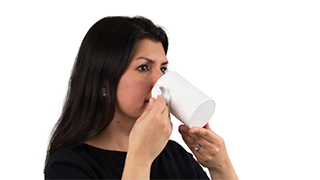What is Osteoporosis?
Our bones contain collagen (protein), calcium salts and other minerals. Each bone is made up of a thick outer shell known as cortical bone and a strong inner mesh of trabecular bone which looks like a honeycomb, with blood and bone marrow between the struts of bone
Osteoporosis occurs when the struts that make up this structure become thin causing bones to become fragile and break easily
Osteoporosis literally means ‘porous bones’ and is commonly linked to post-menopausal women. However men, younger women, children and pregnant women can also be affected
What causes Osteoporosis?
Two types of cell are constantly at work in our bones, building new bone and breaking down old bone: construction and demolition cells
Up to our mid 20’s the construction cells work harder, building strength into our skeleton
Around the age of 35 the demolition cells become more active and our bones gradually lose their density
Women lose bone density faster in the years following the menopause when oestrogen levels drop. This can lead to poor bone health.
Did you know? Almost one in two women and one in five men over the age of 50 will break a bone, mainly due to Osteoporosis
Consequences of Osteoporosis
Osteoporosis causes bones to break following a minor bump or fall. These broken bones, commonly referred to as fragility fractures, are most common in the wrist, hip and spine, although other parts of the body can also be affected
Compressed bones in the back (spinal fractures) can lead to loss of height and spinal curvature, while a broken hip often results in both loss of independence and confidence
Having Osteoporosis does not automatically mean that your bones will break; it means that you have a ‘greater risk of fracture’
Thin, fragile bones in themselves are not painful but the broken bones that can result may cause pain and lead to other problems
However, effective drug treatments, physiotherapy and practical support can reduce the risk of further fractures and speed recovery
Did you know? ‘Broken bones’ and ‘fractures’ are the same thing. Fractures in the spine, caused by Osteoporosis, result in the bone becoming compressed or wedge shaped
Preventing fractures due to Osteoporosis
Our genes are key to deciding the potential size and strength of our skeleton, but the way we live our life can also play a part in the amount of bone we invest in our ‘bone bank’ during our youth, and how much we retain in later life
Healthy balanced eating
Whatever your age or sex, it is vital to make sure that what you eat today will help to keep your skeleton strong for the future
Aim to eat meals that incorporate a wide variety of foods from the four main groups, including fruit and vegetables, carbohydrates like bread, potatoes, pasta and cereals, milk and dairy products, and protein such as meat, fish, eggs, pulses, nuts and seeds
A healthy, balanced diet will also help provide you with all the vitamins, minerals and energy you need to live life to the full, keep your bones healthy and reduce the risk of other chronic diseases
Calcium
Calcium is vital for strong teeth and bones because it gives them strength and rigidity. Our bodies contain about 1kg of this important mineral, 99 per cent of which is found in our bones
Most people should be able to get enough calcium through healthy eating, without the need for additional supplements
700mg daily is recommended although those with osteoporosis taking drug treatments might benefit from around 1,000mg a day
Here are a few examples of some calcium rich food and their Calcium content (mg)
- 190ml of Milk – Whole 224 /Semi-skimmed 231/Skimmed 235
- 150g Low-fat yoghurt 225
- 28g Cheddar cheese 202
- 100g Tofu 480
- 56g Whitebait (fried) 482
Did you know? Low fat or fat free dairy products have as much, if not more, calcium as their full fat versions.
Vitamin D
Vitamin D is needed to help the body absorb calcium
The best source is sunlight, which the body uses during the summer months to manufacture the vital vitamin in your skin. Try to get ten minutes of sun exposure onto bare skin, once or twice a day, without sunscreen and taking care not to burn.
Get outside between May and September so that the body can produce enough Vitamin D to help see you through the winter months
Older frailer people may benefit from a calcium and vitamin D supplement
Stop smoking
Smoking has a toxic effect on bone by stopping the construction cells from doing their work. It’s another good reason to try to give up
Did you know? Current smokers are most at risk of breaking bones easily so quitting is always worth it.
Reduce alcohol intake
Excessive alcohol consumption is a significant risk factor for osteoporosis and fractures
The current daily recommended limit, as suggested by the Food Standards Agency, is two to three units for women and three to four units for men. (A unit equals one small glass (125ml) of wine or half a pint (300mls) of beer or cider.)
Exercise and strong bones
Another way the skeleton can grow stronger is by doing regular weight-bearing exercise. This is any kind of physical activity where you are supporting the weight of your own body, for example jogging, aerobics, tennis, dancing and brisk walking
With Osteoporosis you are at high risk of breaking bones and may need to be careful of vigorous, high impact exercise. After all, broken hips occur in older people when their bones are frail and they fall. But remember, it’s important to stay active
Exercises like swimming, gardening, golf and Tai Chi may help to maintain balance and co-ordination and help to reduce the risk of falling
Diagnosing Osteoporosis and assessing your risk of fracture
The factors that increase the risk of Osteoporosis and fractures include:
Genes: Our bone health is largely dependent on the genes we inherit from our parents. If one of your parents has broken a hip, you are more likely to have a fracture yourself
Age: Bone loss increases in later life so by the age of 75 about half of the population will have osteoporosis. As you get older, bones become more fragile and more likely to break generally, whatever your bone density
Gender: Women have smaller bones than men and they also experience the menopause which accelerates the process of bone turnover
Previous fractures: If you have already broken bones easily, including in the spine, then you are much more likely to have fractures in the future
Race : People who are black Afro Caribbean are at a lower risk than those of Caucasian or Asian origin because their bones are bigger and stronger
Low body weight: If you have low BMI (body mass index), below 19kg/m2, you are at greater risk of developing osteoporosis and fractures
Rheumatoid arthritis
Low levels of the sex hormone oestrogen in women as a result of early menopause, having a hysterectomy with removal of ovaries (before the age of 45), anorexia nervosa or taking drugs such as aromatase inhibitors for breast cancer
Low levels of Testosterone in men following surgery or treatment for some cancers
Conditions that affect the absorption of food such as Crohn’s or Coeliac disease
Conditions that cause long periods of immobility
Taking Corticosteroid tablets such as Prednisolone for other medical conditions for over three months
Drinking excessive amounts of alcohol
Smoking
Older people who are at risk of falling are more likely to have fractures, especially of the hip, after the age of 75 years.
Diagnosing Osteoporosis on a scan
Osteoporosis is currently diagnosed on a bone density scanning machine when the amount of bone you have, as measured on the scan, is found to be significantly lower than average. The lower your bone density the higher your risk of breaking bones
Central dual energy x-ray absorptiometry (DXA) scanning is currently the most accurate and reliable method. It is a simple, painless procedure that uses very low doses of radiation. You will be asked to lie down for 10-15 minutes while an x-ray scanning arm passes over you to take an image of your spine and hip. These scanners are usually in hospitals although not all hospitals have one
Bone density scans are only recommended for people who are considered to be at high risk of having a fragility fracture. Your GP will discuss your risk factors with you and then decide whether a referral is necessary. If you think you are at risk then talk to your GP to discuss whether a scan would be useful
Assessing fracture risk
Although a diagnosis of Osteoporosis will increase the risk of a fracture, many other factors will also contribute to your risk
Some of these risk factors, such as the risk of falling, may be tackled by lifestyle changes. Others relate to bone strength and may be improved by taking drug treatments
When doctors decide who needs drug treatment to reduce their risk of a fracture, they are moving towards using ‘fracture risk assessment’ rather than simply diagnosing osteoporosis. For this they use a fracture risk assessment tool called FRAX. Measurement of bone density may form part of this assessment but may not always be necessary
The following are the main drug treatments for Osteoporosis:
The treatment of osteoporosis depends on a number of factors including your age, sex, medical history and which bones you have broken. Osteoporosis drug treatments aim to strengthen existing bone, to help prevent further bone loss and, most importantly, reduce the risk of broken bones
Bisphosphonates Alendronic acid / alendronate (Fosamax), risedronate (Actonel), ibandronate (Bonviva), etidronate (Didronel PMO) and zoledronic acid (Aclasta). Available in tablet form on a daily, weekly or monthly basis.
Ibandronate is also given as a three monthly injection. Zoledronic acid is given as a yearly infusion via a drip in the arm
Selective Estrogen Receptor Modulator (SERM) Raloxifene (Evista) , prescribed to reduce the risk of spinal fractures in women after the menopause
Strontium ranelate (Protelos) Appears to affect both cells that build bone and those that break it down thus reducing the risk of hip and spinal fracture. It is unclear how this works to reduce the risk of broken bones. It comes in powder form that is mixed in water and taken daily
Denosumab (Prolia). Given as an injection under the skin twice a year.
Drug treatments to reduce risk of fractures
Parathyroid hormone (PTH) treatment Teriparatide (Forsteo), Preotact, prescribed to reduce the risk of spinal fracture. The drugs are self administered as daily injections, given over a period of 18-24 months. They are only available from specialists and are generally prescribed to those who have suffered a number of spinal fractures
Calcium and vitamin D. Often prescribed to older people to help prevent broken hips
There are other treatments generally only prescribed when others are not appropriate, including calcitonin (Miacalcic) and calcitriol (Rocaltrol).
Hormone Replacement Therapy is not generally used as a treatment for osteoporosis because of long-term risks of blood clots, heart disease, strokes and breast cancer. In younger post menopausal women it may be considered after careful consideration of risks and benefits. Testosterone may be prescribed to men with low hormone levels to strengthen their bones
Did you know? Drug treatments for fragile bones and Osteoporosis can reduce fracture risk by about 50 per cent.
Recovering from broken bones
Bones heal in 6-8 weeks but pain and other problems may continue for longer. Recovering from a broken hip can be a long process and you may need a referral to a physiotherapist and social services to help you recover
Compressed or wedge shaped bones in the spine (spinal fractures) are sometimes very painful, but not always. Long term chronic pain may continue even after bones have healed due to changes in posture and the strain this puts on muscles and ligaments. Exercises to help strengthen the muscles that support the spine can be helpful
Simple over-the-counter pain relievers, or stronger pain relieving drugs prescribed by your GP, can also make a big difference if taken properly. A referral to an NHS pain clinic may sometimes be necessary. Drug free ways to manage pain include physiotherapy, hydrotherapy (exercise in water) or using a TENs (transcutaneous electrical nerve stimulation) machine. Self management courses such as the ‘Expert Patient Programme’ may be helpful
Therapies like acupuncture, homeopathy, the Alexander Technique and aromatherapy may also be of some benefit
Some specialists sometimes use a surgical procedure called percutaneous vertebroplasty or kyphoplasty to help with painful spinal fractures
This information has been condensed from literature by the National Osteoporosis Society. Visit www.nos.org.uk to find out more about osteoporosis and bone health









June 11th, 2012 at 12:53 pm (#)
[…] Osteoporosis […]